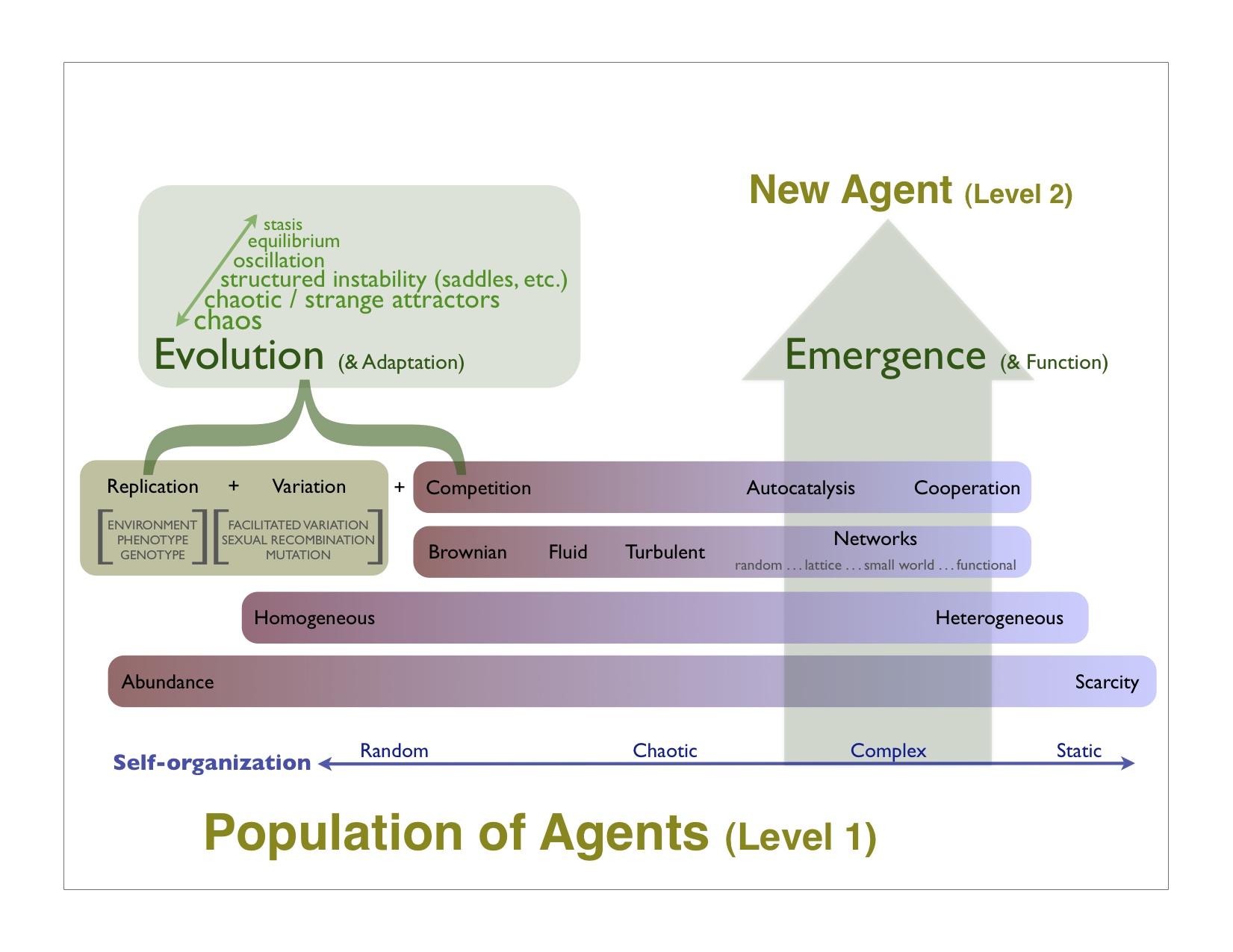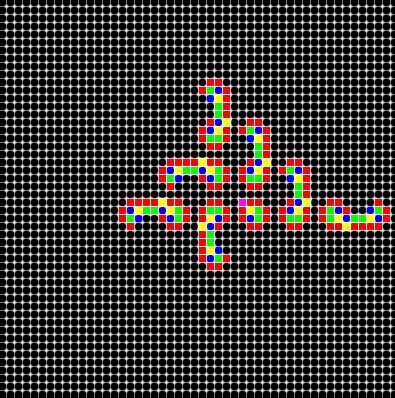Autocatalysis
The Adjacent Possible
Stuart Kauffman has a concept called the Adjacent Possible which I find incredibly useful in understanding the world. Simply put, if you think of the space of possibilities from the present moment forward and just concentrate on those that are achievable today — adjacent to the present moment — that’s the Adjacent Possible.
What’s interesting about possibility-space is that tomorrow’s Adjacent Possible depends on the actions and choices we make today; it’s not symmetric and it’s nonlinear. Certain actions generate more future possibilities than others. In my experience, those actions tend to be the cooperative ones, ones that produce network effects: financial, social and otherwise.
Due to our evolutionary heritage, having come from a resource-constrained world, we may be predisposed to see the more competitive actions which tend to shrink the Adjacent Possible. Whether or not this is a bias or an actual state of affairs, much of our thinking is based on scarcity, so we are drawn to actions that become self-limiting.
Here’s …
The Technium
Here are the slides from his talk. My favorites are 3, 4, 8, 10, 15, 19, 21, 23, 26, 28, 29, 35, 37, 38, 53, 66, 68.
Synthesis of Complexity Theory
As careful readers of this blog will note, I’ve been obsessed with Alex Ryan’s visualization of the way new levels of organization come into being (e.g. atoms -> molecules -> cells, etc). In an attempt to complement and extend his model, here’s a visualization of how I think of the various concepts coming together:
First off, I know that this may not make sense to most people. The relationships implied by proximity, color, dimension, etc are not totally accurate. The problem is, I’ve reached the limit of my personal ability to create a good visualization. So I’m throwing this out there half-baked hoping that the crowd (that’s you) will help bring this together in a more coherent way.
I’m especially interested in hearing from people who have great design skills. If you don’t, then at the least you can ask probing questions to suss out the sources of confusion, which will then feed into the redesign process.
A more detailed explication of these concepts can …
Answer to "Guess What Species?"
Yesterday’s puzzler was to guess the species being talked about here:
One became super efficient at gobbling up its food, doing so at a rate that was about a hundred times faster than the other. The other was slower at acquiring food, but produced about three times more progeny per generation.
The answer is……
Alfred Hubler on Stabilizing CAS
With his permission, I am posting an email thread between myself and Alfred Hubler. I had contacted him on the recommendation of John Miller when Kevin and I were posting on the possibility of dampening boom-bust cycles in the financial markets through policy or other mechanisms. Here’s what Hubler had to say:…
Crohn's Disease
Debbie Maier asks us on the Upcoming Topics page to address Crohn’s Disease.
I don’t know too much about it except that it’s an autoimmune disease and has a complex, multi-causal etiology and pathology. In my reading on autoimmune diseases in general there seems to be a direct link between latitude an incidence. Specifically, the farther from the equator you live the more likely you are to get Crohn’s, Type 1 diabetes, rheumatoid arthritis, and so on.…
Autocatalytic Systems
The above is a self-replicating dynamic structure from a class of systems called cellular automata (click here to run the simulation). Below is a self-replicating dynamic structure from a class of systems called “life”:…
Complex Systems Defend Themselves
I’ve talked on here about the importance of taking seriously the notion of agency as it applies to systems other than biological. In reading a recent Wired retrospective on what they called wrong, I was struck by feeling that their error was the same in all three cases, and that is underestimating the degree to which complex systems will defend themselves in the face of attack as if they were living, breathing organisms.…
Coherence
I posted earlier on emergent causality. One aspect that needs to be elaborated on is the concurrent, self-interdependent nature of emergence, or in other words the chicken and egg problem.…
The Secret
Unless you’ve been living under a rock for the last year, you know about the self-help phenomenon called The Secret. Perhaps you even bought the DVD or book or had (multiple) friends tell you about it, or even buy it for you as a gift. The Secret is not without its critics, of course. And the real question in my mind is, if it’s so widely watched/read and if so many people are attempting to put its principles into practice, why haven’t we noticed the positive effects on large swaths of society (at least American society where it’s been marketed the most)? There are countless answers to this question, including, “it takes time,” “the effects are mostly internal,” and “it doesn’t work.” I have a different take on it.…
Genotype, Phenotype, Schmenotype
The distinction between “genotype” and “phenotype” is an artificial one that obfuscates understanding past a certain point. As Dawkins points out in his selfish gene argument, from the standpoint of the gene, the gene is the phenotype and the organism is the genotype. This is not to say that we should go overboard and anoint the gene as supreme. “Genotype” and “phenotype” are concepts. From a complex system’s standpoint, they are two frozen snapshots (stages) in an ongoing autocatalytic cycle. Other stages between could be singled out and studied (e.g. ontogenesis), but we are not good at conceptualizing dynamic processes and prefer to look at relatively stable forms. We forget that these stable forms are a part of the autocatalytic process, which is ongoing.…
Types of Emergence
Stability can be thought of as a measure of agency. That is, the more stable a system is, the better we are able to recognize it as a distinct agent, a system that actively, structurally or by happenstance persists through time, space and/or other dimensions. Burton Voorhees defines a concept of virtual stability as a “state in which a system employs self-monitoring and adaptive control to maintain itself in a configuration that would otherwise be unstable.” He clarifies that virtual stability is not the same as stability or metastability and gives formal definitions of all three.* By making a distinction between stability, metastability and virtual stability, we can gain further clarity on agency itself and the emergence of new agents and new levels of organization.…


Best Reader Comment Award
I’m giving my “2009 Q1 award for most concise, lucid comment” to Paul Phillips for this gem:
…Autocatalysis, Blog Comment, Economics, Incentives, Interconnectedness, Markets, Non-linearity, Stability Autocatalysis, Blog Comment, Economics, Incentives, Interconnectedness, Markets, Non-linearity, Stability, 1